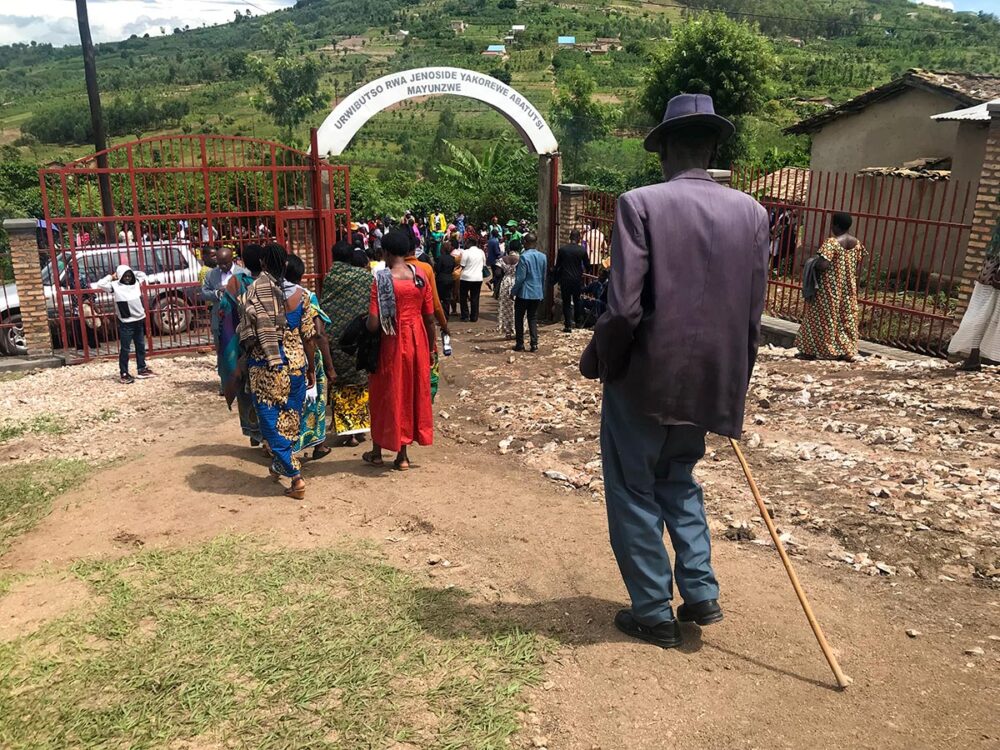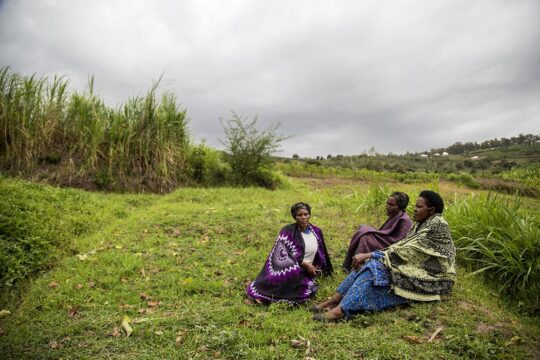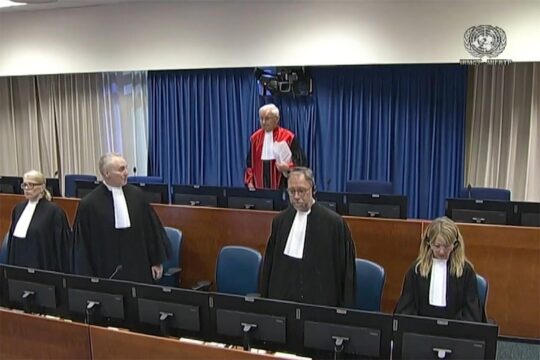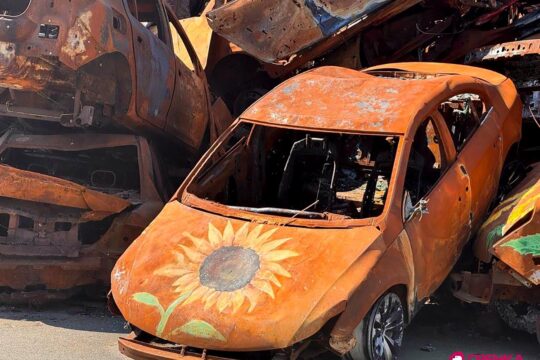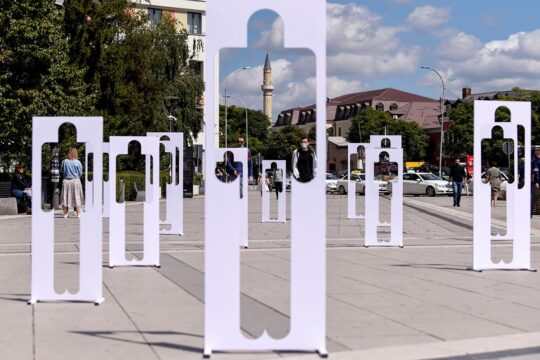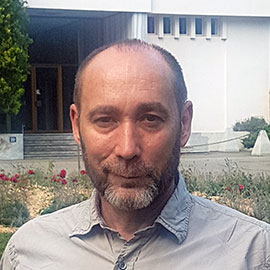The Nyabarongo River, which winds like a garland around half the Rwandan capital Kigali, is already overflowing into the wide marshes along its bed. The rainy season has begun in Rwanda, with sudden, heavy showers.
We often forget what the weather was like at the time of mass killings. In April 1975 in Cambodia, when the Khmer Rouge forcibly emptied the capital and threw hundreds of thousands of Cambodians onto the roads, the sun was blazing hot, decimating the most vulnerable if they weren't victim of summary executions. In April 1994 in Rwanda, when militiamen, soldiers and Hutu civilians decided to exterminate their Tutsi neighbours, a heavy rainy season was upon the country and the Nyabarongo washed away the bodies. Survivors often recount that the rain gave them respite, as the killers didn't like to “work” in the wet. But for others, the rain added to their ordeal, transforming marshy plains where they tried to flee into death traps.
It is hard to imagine the terror under Pol Pot with around a quarter of the Cambodian population wiped out in four years, or under the Interahamwe militia with some two-thirds of the Tutsi population exterminated in three months. But on this April 7, as Rwandans organize the 30th commemoration of the genocide of the Tutsis, the rains are part of the remembrance, filling the days of mourning with melancholy and a desire for protection.
The day everything changed
At around 9 a.m. on Sunday morning, the inhabitants of Mayunzwe and the surrounding area arrive in small groups at the vast grounds of the memorial built over 15 years ago in the heart of this central Rwandan village. A large white tent has been set up for local dignitaries and those who arrived first. The rain began at dawn, and everyone fears it might accompany the entire ceremony. Dozens of villagers sit on the grass or stand near the tent, which cannot protect everyone. Contemporary songs recounting the genocide greet them through a powerful, high-quality sound system.
Mayunzwe lies 85 kilometres west of Kigali. It is near the town of Muhanga, formerly Gitarama, which was the religious and political centre of Rwanda at the time of independence and where the Catholic Church, still powerful despite its political compromises, still holds a veritable real estate empire. On the hilltop overlooking the village towers an imposing brick church, a symbol of this strongly maintained Christian presence. Mayunzwe is named after the hill that rises opposite from a magnificent green circle with fields of manioc, sorghum and sweet potatoes, banana and eucalyptus. Here, as in so many Rwandan communes in central and southern Rwanda, the systematic massacre of Tutsis didn't start on April 7 but around two weeks later, after the central government publicly supported the killings that were already ravaging the capital and had spread to the east, north and west of the country. Under the leadership of the bourgmestre - as mayors were then known in this former Belgian colony - and local militiamen, Hutus set about hunting their Tutsi neighbours, with whom they had shared a beer just a few days earlier, with whom they had grown up and to whom they were often related. And they took them to the top of the hill above the village.
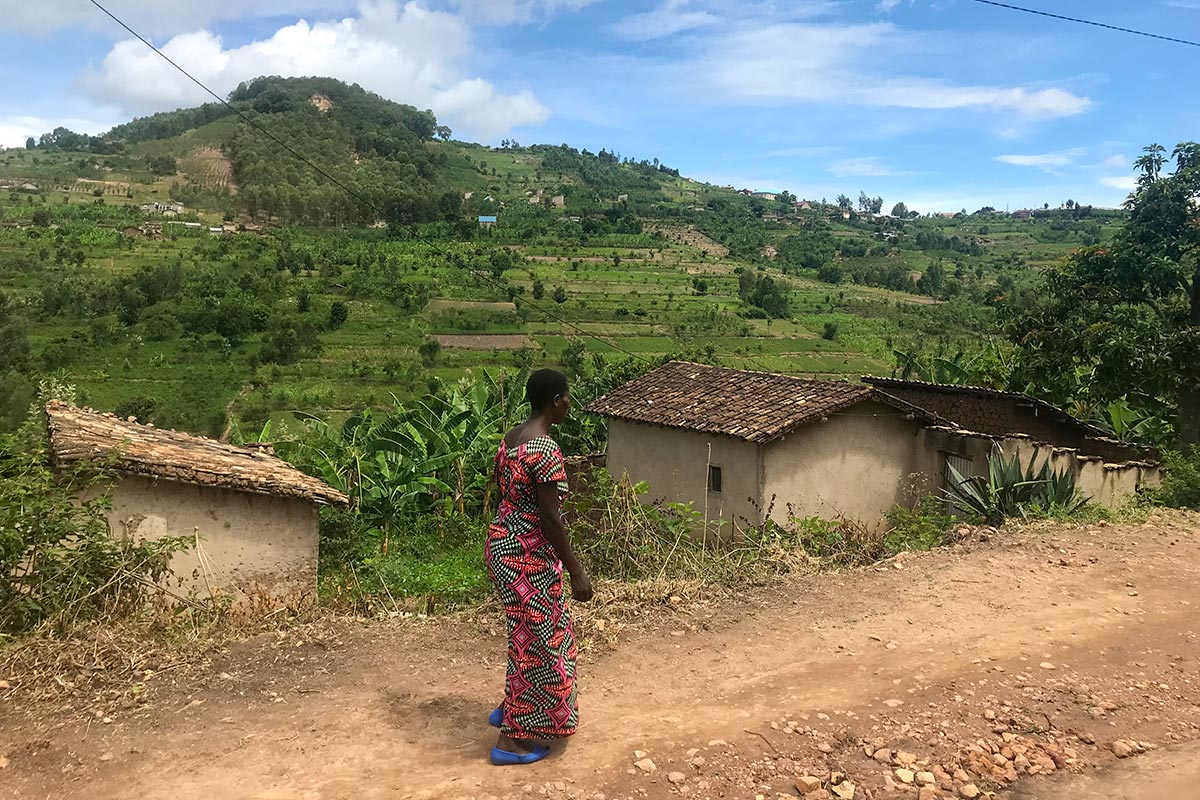
“By dawn, the killers had arrested us all -- me, my parents and my seven brothers and sisters -- before driving us to Calvary. Was there a plan, national or local, to keep one Tutsi alive? Was it by chance? In any case, he [the leader of the killers] forced the others to spare me temporarily,” Charles Habonimana recounted in an interview with Jeune Afrique in 2019, after the publication of his book “Le dernier Tutsi” (the last Tutsi). Charles was 12 at the time. His father, who ran a popular bistro in Mayunzwe, and his uncle were killed before his eyes with machetes and clubs. His mother and seven brothers and sisters were buried alive shortly afterwards. Charles was the only survivor in his family, along with his eldest sister. “Even today, when I ask them how they could have turned into génocidaires, ready to exterminate us all, they struggle to explain. One of them told me: ‘I was myself until everyone pushed me to do it. I thought that once it was over, I wouldn't have any regrets’.”
The genocidal order
It is this same path of “Calvary”, as it has since been named, that the villagers have been invited to take 30 years later, under a fading drizzle. The procession moves silently along the steep path, through fields of beans, manioc and coffee, dotted with corn plants. Charles Habonimana, now managing director of Société des Aéroports du Rwanda, has long been the guardian of memory in Mayunzwe. But today, it's another survivor who tells the story, standing on one of the granite rock outcrops that look like pieces of the moon amongst the wild grass. The villagers circle around him on the steep slope. Most of the men are dressed in modern-day clothes, but there are still a handful of peasants with old-fashioned costumes and straw hats, reminiscent of yesteryear Rwanda. The view is soft and sumptuous over the hills, from which emerge humble dwellings from the past with their harmonious tiled roofs, and the brilliant sheen of the sheet metal that has gradually replaced them.
“Opposite this hill we're standing on is Mwendo, and behind it is Kizibere. Many Tutsis used to live all around this hill. But today, you will see there are only ruins and remains,” Jean-Baptiste Iragena tells the gathered, motionless audience. “Before the plane fell,” he says -- referring to the downing of the presidential plane on April 6 evening which marked the start of the genocide and whose perpetrators have never been identified --, “we peasants were all united, Hutus and Tutsis. But everything changed suddenly.” At the time, Iragena was in charge of a cell, an administrative level consisting of several groups of houses. At first, he was able to ensure security in his neighbourhood. Then, around April 21, from a nearby hill, “we heard a lot of clamour, saw smoke from burning houses and a lot of people fleeing”. The next day, the madness spread and drew closer. Iragena and his companions regrouped, equipped themselves with traditional weapons and paid an area councillor to provide security, before deciding to leave the area. They came across some acquaintances on the run. “They told us that people in their homes had been massacred with grenades and other firearms, and that we could not do anything with our weapons. We were discouraged.”
Each person chose their own place to flee. Some went to the sub-prefecture of Ruhango, others to the large diocese of Kabgayi, in Gitarama, while still others “went on the run”. They decided to send old people, women, children and cattle to the heights of their hill. They planned to “use stones to repel the attacks”. Early in the morning, Iragena discreetly met up with a friend who was a leader in the commune. This friend told him a meeting was due to take place on April 23 to give orders on implementing the genocide. Iragena had already been replaced as cell leader.
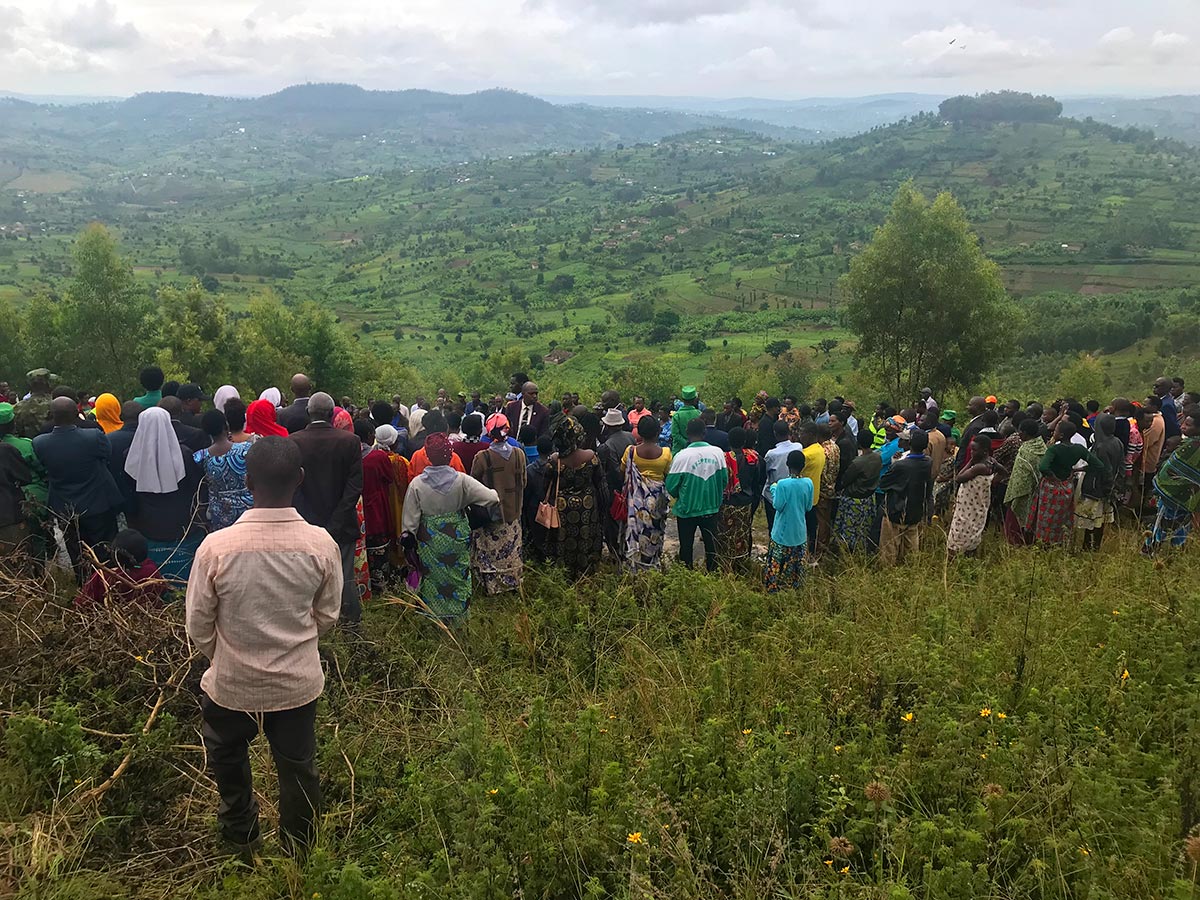
The first massacre
The hunted Tutsis scattered. Some came back from the local priest, who had chased them away. He had no refuge for the “inyenzi” (cockroaches, the name all Tutsis were now called), he told them. “On Saturday, April 23, in broad daylight, the Interahamwe militia came from Ruhango and gave the signal for the massacres. In fact, the whole population was afraid when they heard the Interahamwe had come. Their very name made us all tremble. It was confusion. After the councillor gave orders, the whole of Mayunzwe got its trigger for the madness. People dissociated from each other, those who were united split from each other and started eating Rwabuyonza's cows, others started eating all our cows and looting our property,” Iragena continues. “On Sunday the 24th, they began the massacres proper. They flushed people out of their hiding places, in their homes, hunted our relatives and others on the roads, all the Tutsis. Everyone knew everyone else. They brought them all here, on this hill. It was a way of grouping the Tutsis together, to kill them at their leisure, slowly. As they climbed the hill, they hit their Tutsi victims with sticks and clubs. That rock you see and that one there, that's called the Calvary, or place of torment. Some of them were sitting over there, hitting their victims with stones, of which there are many on this hill. Some used stones, some clubs, some machetes. As we have formed this circle now, so they surrounded the Tutsis to kill them at will, like beasts to the slaughter. Over 40 people were killed that day.”
Iragena thinks it important to thank the Hutus who hid or helped them. But this solidarity also gave way under the killers’ threats, he says. Later, faced with the stench of decomposing bodies, the killers covered them with earth. “Others were eaten by wild animals. This hill was a haunt for jackals, who feasted on the bodies of our people. Those who managed to escape can be counted on the fingers of one hand, including Charles, a few women and perhaps a single child...”
“Commemoration is a pact”
The names of some responsible for the killings are disclosed, but denunciation is no longer the order of the day 30 years on, and the heart-rending cries of the widows have fallen silent. Time has passed, and we can’t tell whether it has brought appeasement or the hidden wear and tear of pain. It is no longer the adults of the time who do most of the remembering but those who were children or teenagers, or even the descendants of the survivors. Two-thirds of the current Rwandan population were born after the genocide.
“Commemoration is a pact that Rwandans have made with each other to remember. That's why we're together, wherever we are, to try and keep our history alive. It is a way of fighting against hatred and anything that can undermine social cohesion,” said the sector's executive secretary Jean-Claude Nkurayija after everyone had made their way down from “Calvary” to the big tent. He was still at elementary school in the early ‘90s. “It's all about moving towards resilience, commitment to ‘never again’, and building a new history with a united Rwanda, regardless of origin,” he says. “The ultimate goal is not to be a slave to our past. We share the same problems, we must have the same solutions and the same vision to build a country free from the ideology of genocide.”
“Those who committed the genocide made the wrong choice, the choice of having blood on their hands,” says Bernard Nyandwi, 35, president of the Ibuka survivors' association for this district. “Some people dissociated themselves from them, preferring to save the Tutsis. To them, we say thank you, and ask them to continue supporting vulnerable survivors throughout the 100-day commemoration period.” He asks that particular attention be paid to children born of rape during the genocide, who appear to be the forgotten victims of reparation programmes.
“Learning from our history, that's the pact”
At midday, at all the commemoration sites across the country, there is an audio hook-up with the official ceremony taking place in Kigali. During this, there is a sensitive and humble speech by the representative of the African Union, an awkward one from the President of the European Council. Then comes an implacable and combative speech by Rwandan President Paul Kagame, directly interpreted from English into Kinyarwanda. Shortly after 1 pm the speeches come to an end and the sound system gave way to songs of remembrance. A bright sun has chased away the dark clouds. Everyone heads for the memorial in front of the marquee, where wreaths are laid and local dignitaries briefly pay their respects.
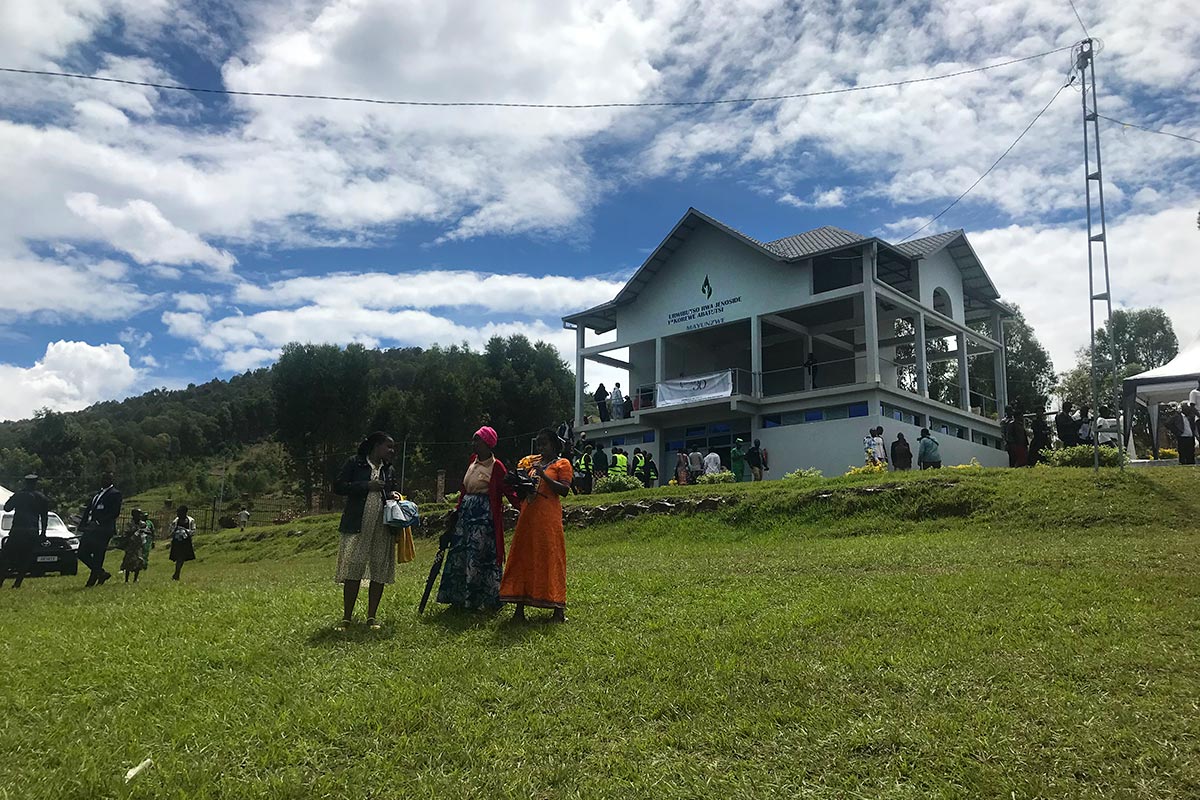
In a room at garden level, in cement niches, a few coffins filled with human remains are aligned. Above them are often blurred and faded photographs of the victims, and a copy of Habonimana's book. According to Ibuka, the site contains 950 bodies. In his speech, the mayor of Ruhango, Valens Habarurema who was 15 at the time of the genocide, announced that a further 4,030 bodies would be laid to rest there on April 18 and 19. “This will be an opportunity for us former neighbours, schoolmates and work colleagues to get together,” he said. “An opportunity to analyse our past, to remember our lost brothers and children. This is the pact: to learn from our history so that it never happens again.”


